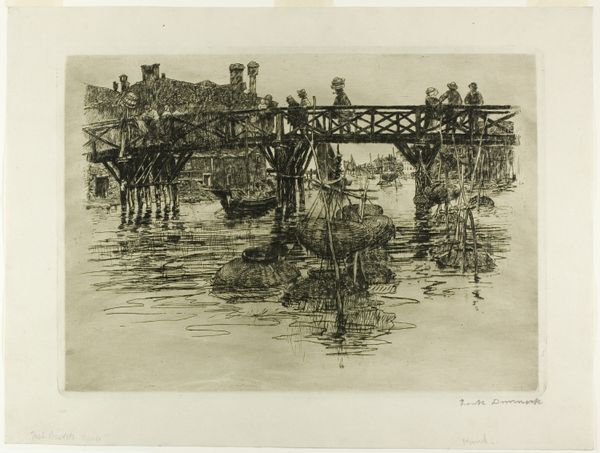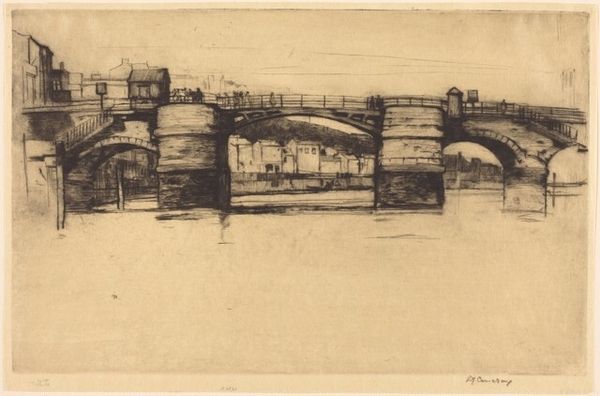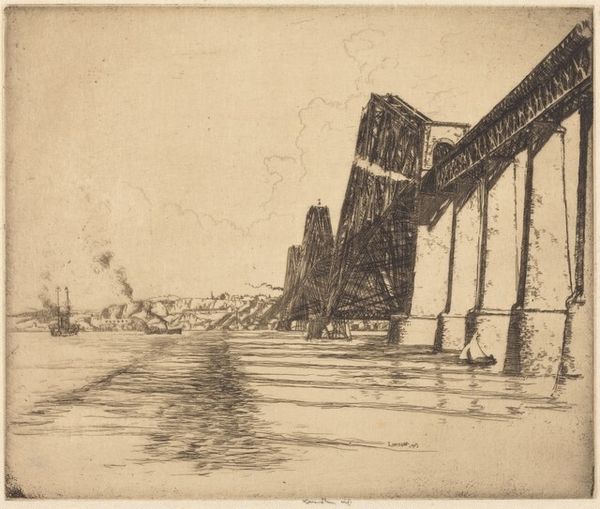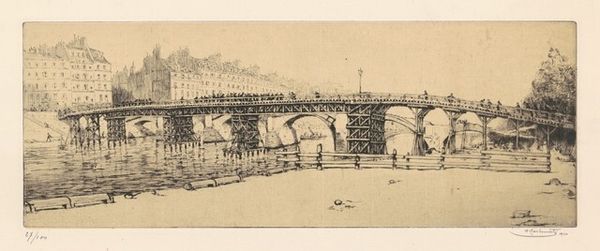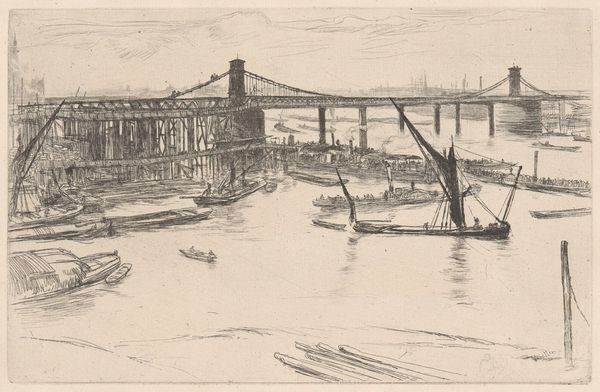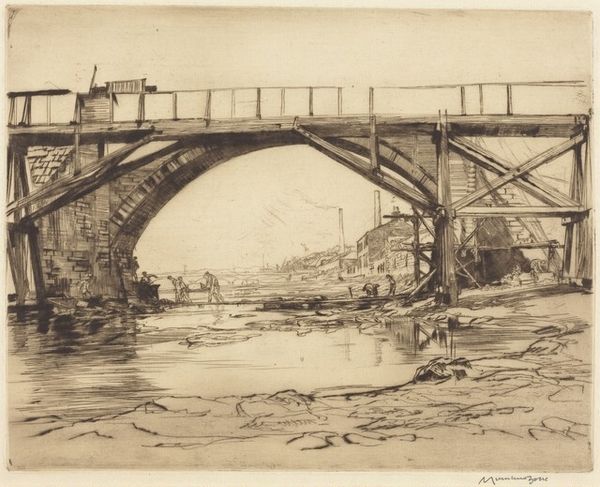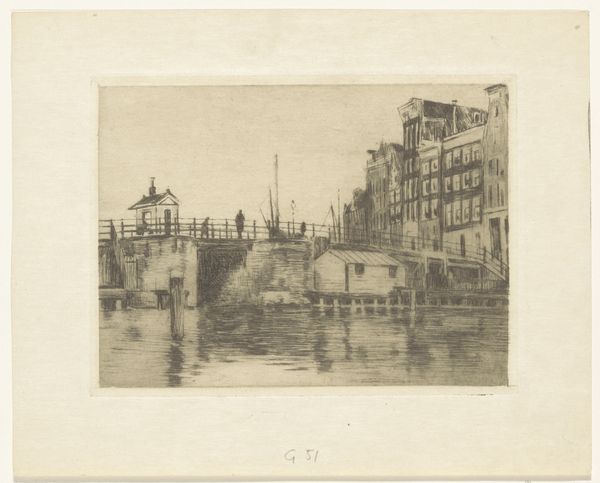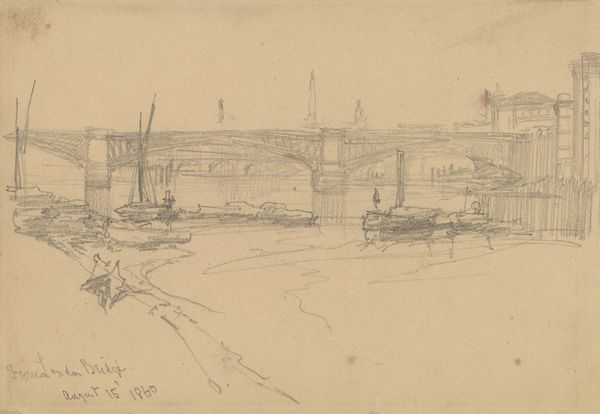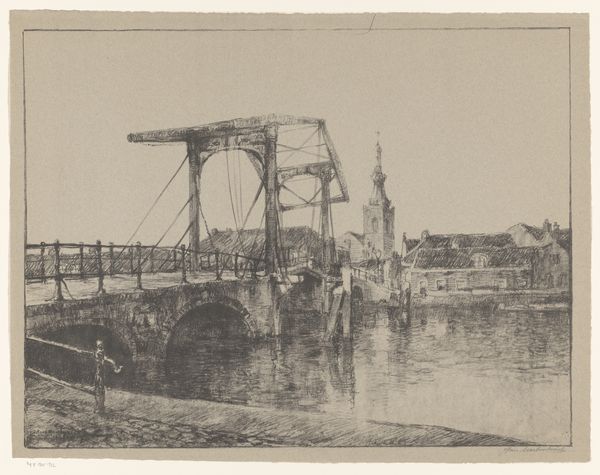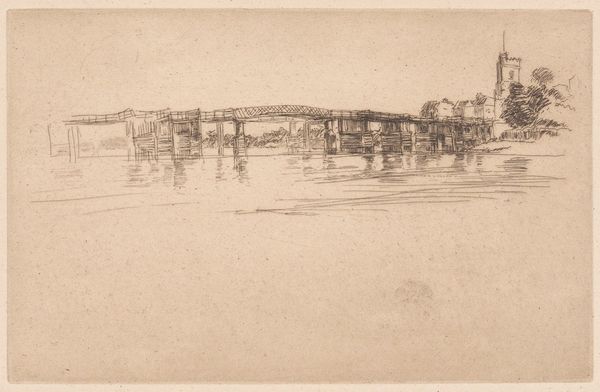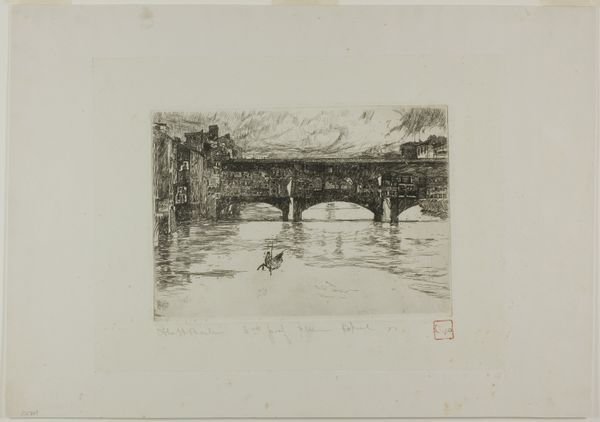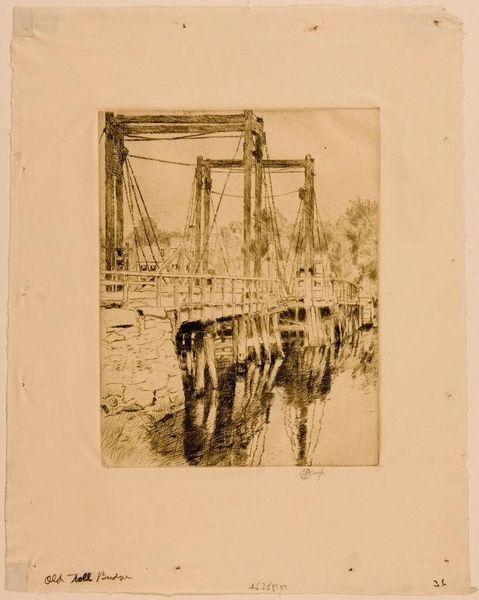
print, etching
# print
#
impressionism
#
etching
#
landscape
#
line
#
cityscape
Dimensions: height 200 mm, width 295 mm
Copyright: Rijks Museum: Open Domain
Curator: James McNeill Whistler's 1879 etching, "Old Battersea Bridge," presents us with a delicate yet powerful image. The artwork is held here at the Rijksmuseum. Editor: There's a fragility to the lines, a quiet tension between the imposing structure and the water. It evokes a sense of impermanence. Curator: Exactly! Notice how Whistler employs line in a uniquely evocative way, establishing a sense of depth and space with an economy of marks. Consider the angular forms of the bridge's supports, juxtaposed with the softer curve of the sailboat's sail. Semiotically, this is sophisticated: we see structural opposition. Editor: That sailboat isn't just incidental, is it? It brings a sense of timelessness to an industrial-era scene. The bridge, heavy and wooden, implies progress and connection, but the sail recalls a different era. This generates tension—suggesting the old ways will slowly be replaced. Curator: That's perceptive. The cityscape dissolves in the distance, really; atmospheric perspective enhances the dreamlike quality. This is really where Whistler’s Impressionistic tendencies shine through. The scene is about evoking feeling rather than documentation. Editor: Yes. Bridges are about traversing divides. But consider Battersea Bridge: it developed a local reputation, some say unfairly, as the "Suicide Bridge". This reputation only solidified as the bridge declined, becoming dilapidated and dark. Seen in that light, the hazy dreamlike quality casts an ominous shadow, almost as if one is fading into a space between realities. Curator: Fascinating insight. Indeed, the visual harmony creates a stable composition and at the same time, the bridge could be interpreted as unstable, even teetering, thus provoking feelings of anxiety, mirroring anxieties about rapid modernization during that time. Editor: Considering all that has been revealed, this simple waterscape shows how our interpretation can evolve from something visually serene to an image laced with psychological nuance. Curator: A great illustration of how art can contain multiple perspectives and hold meaning far beyond its materials!
Comments
No comments
Be the first to comment and join the conversation on the ultimate creative platform.

